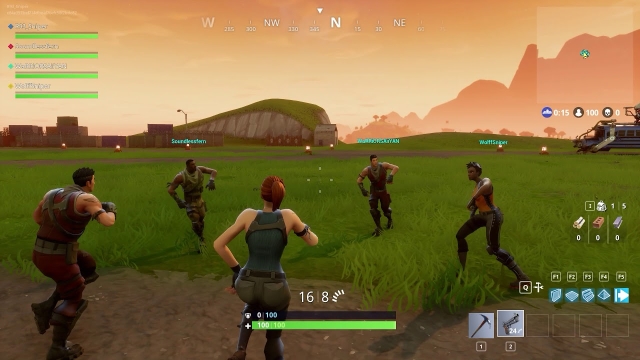WC '18 Contest 4 S3 - Dance Royale
View as PDFWoburn Challenge 2018-19 Round 4 - Senior Division

Billy is trying his hand at the latest popular game taking the world by storm: Dance Royale.
In Dance Royale, there are
locations on a
map (numbered from
to
). Each location
has a destination number
, which is used during gameplay (as
described below).
There are also
players, with the
-th
player beginning the game at location
.
Each player has some sick dance moves.
The game proceeds in sets of three phases as follows:
- For each unordered pair of players still in the game, if they are currently at the same location and have not yet had a dance-off against one another, then they engage in a dance-off against one another. Nobody is harmed in the process, a good time is simply had.
- For each player still in the game, let
be their current location's destination number. If
, then they're forced to permanently leave the game. Otherwise, they move to location
.
- If there are fewer than
players left in the game, then the game ends. Otherwise, the process repeats itself from phase
.
Note that the game may last forever, which is fine — Billy is accustomed to extended periods of mental focus.
After the game has either ended or has gone on for an infinite amount of time, how many dance-offs will end up having taken place in total?
Subtasks
In test cases worth of the points,
,
, and
for each
.
In test cases worth another of the points,
, and
for each
.
In test cases worth another of the points,
for each
.
Input Specification
The first line of input consists of two space-separated integers, and
.
lines follow, the
-th of which consists of a single integer,
, for
.
lines follow, the
-th of which consists of a single integer,
, for
.
Output Specification
Output a single integer, the number of dance-offs which will take place.
Sample Input 1
4 4
4
3
1
3
4
2
3
4Sample Output 1
3Sample Input 2
5 6
4
0
4
1
1
4
2
5
3
2
2Sample Output 2
4Sample Explanation
In the first case:
- Right off the bat, a dance-off will occur between players
and
, as they both occupy location
.
- Then, in the second cycle of the phases, players
,
, and
will all find themselves at location
, resulting in player
having dance-offs with both players
and
. Note that players
and
will not repeat their dance-off against one another.
- The game will end up continuing forever with all
players in action, but no more dance-offs will ever take place.
In the second case:
- Right off the bat, dance-offs will occur between player pairs
,
, and
, due to players
,
, and
all occupying location
. These
players will then leave the game in phase
.
- Then, in the second cycle of the phases, players
and
will both find themselves at location
and will therefore have a dance-off.
- The game will end up continuing forever with
players remaining, but no more dance-offs will ever take place.
Comments